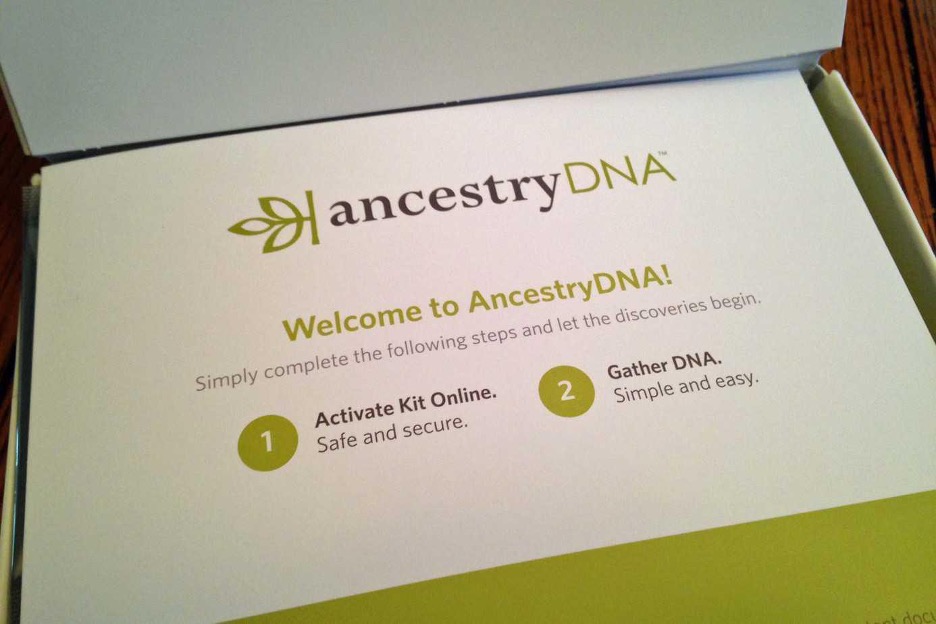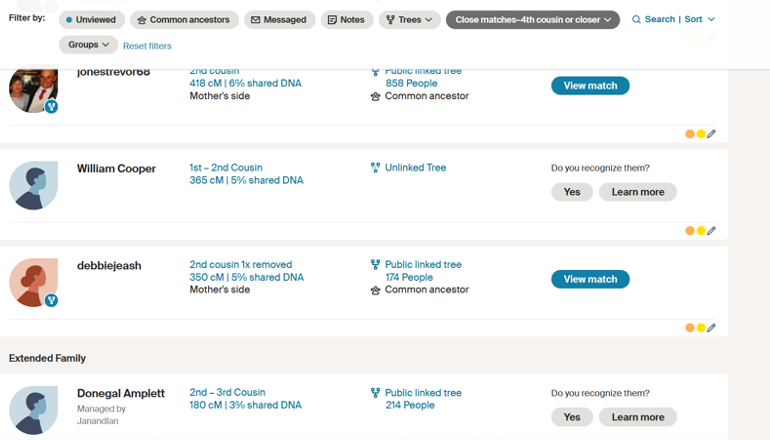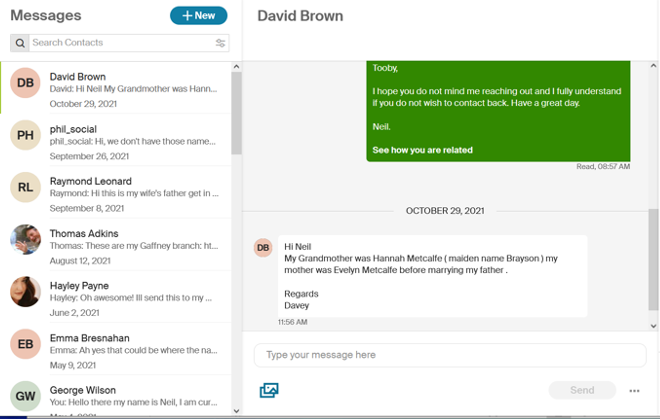How to Find a Biological Father without his Name
Is it possible to find a biological father without his name? In this article, we'll show you the steps you can take to try and find your birth father without knowing his name.
Growing up I knew little about my father other than his name and generally where he came from. Discovering an interest in genealogy almost a decade ago led to a difficult search because of this disconnect. With creative research and the help of some accidentally found family I eventually got a long way back into my paternal side.
AncestryDNA is Our Top Recommendation
After reviewing all of the top DNA products on the market, nothing comes close to AncestryDNA to help you discover your whole family story!
They give you so much more than any other family tree DNA kit, and let you connect to the places you're from in the world where your family story started, and even help you to discover living relatives you never knew you had!
For the most accurate family history research based on your DNA, sign up for AncestryDNA now!
Get AncestryDNA →I am very happy about that and it was hard-fought information but at least I had the luxury of a name. There are people who for one reason or another may not have even that when it comes to their father. This can range from adoptees to older individuals whose mothers never told them who their fathers were.
The question then is this: Is there any way to determine who a person's father is without knowing that man's name? Well, there are ways to achieve this, although it’s rarely easy and sometimes the search ends in failure. But as the saying goes, we don’t know until we try.
Check the Records
This is an obvious step but sometimes it doesn’t occur to some people to take a look at their own birth certificates. Generally speaking, we do only use our birth certificates for a few things throughout our lives.
In the case of adoptions, it is likely that the person will have never seen their original birth certificate. When an adoption takes place a new certificate is created with new family details. Adoptees then should find out what they can about where they were born and try to determine if a copy of the original certificate may be found.
Adoption laws vary from state to state so it is best to acquaint yourself with what you might be able to find out. It should be noted that even if that birth certificate is located the father's name may not be present or an incorrect name could also be recorded.
This is still worth trying, however, because the answer may be right there waiting to be confirmed. Even if there is some doubt as to the validity of the information on the document there are ways to test theories to confirm or deny.
Purchase a DNA Test
Autosomal
Genealogy sites such as AncestryDNA and 23andMe offer reasonably priced DNA tests that not only give you an ethnicity estimate but also may connect you to unknown family members. These main testing sites use autosomal DNA tests to determine your possible family matches in their databases.
Autosomal DNA is what makes up most of our chromosomes and we receive 50% of this type of DNA from both of our parents. Sites like AncestryDNA and 23andMe use this DNA specifically for their matching so we can trace both of our family lines.

YDNA
There is a second type of DNA that can help specifically trace the paternal family line and this is known as YDNA. It is passed largely unchanged from father to son reaching back generations.
This is a test that only males can take but if a female has a brother or other male family member that is a known blood relative of the man in question they may be able to test instead. This is a test that can be used to trace a common ancestor back many generations.
How to Use DNA Matches to Find Your Father
It should first be stated that in order to find out who your father might be without knowing their name it is going to take a certain amount of luck. The very best case scenario would be getting your AncestryDNA tests back and finding an older male with whom you share around 3400 centimorgans of DNA.
A match of that magnitude is almost certainly going to be one of parent and child, making that person most likely your father. The truth is that this level of luck is very rare and so in lieu of that type of result it may take a lot of hard work to find some potential candidates for being your father.
The very first step you need to take is to try and identify any DNA matches you can place on your maternal line. I myself have a couple of first cousins who showed up as matches to me and I was able to place them on the right side of my family.
AncestryDNA offers tools that help you color code matches to indicate which side of the family they fall upon or even allow you to assign a known relationship as well.

The aim of this initial organization is to determine which matches do not connect to your mother's side of the family. If they have no connection with your maternal line then the chances are that these individuals are connected to your father.
Focus on these potential paternal family members and if possible look closely at their family trees. The closer the match to you the better start from your highest centimorgan matches first. Determine if there are any surnames that pop up in multiple trees that may be on your father's side.
A common family name across multiple DNA matches may indicate possible surnames for your father. If the DNA matches do not have a tree you can view you might try reaching out and tactfully enquiring if they might let you view their tree or if certain surnames may be present in their family history.
Having determined a potential family name that may be connected to your father, try and cross-reference the most recent mentions of that surname in the trees of your closest matches. The aim is to try and see if these people may be descended from a specific set of siblings.
If there are a group of siblings from whom these matches descend then there is a possibility that you might be descended from one of them. Do your best to research the male siblings and find out what you can through Google searches.
Reaching Out for Help
After sorting through your matches you will hopefully have developed some theories as to who your father might be. You could very well leave it at that or you can try and go further with your research. It is important to understand that if you do not know who your father was it is possible that people close to him do not know about you.
The only way to get close to proving who your father was is to reach out to people who may have known him. These matches on AncestryDNA could be children, nieces, nephews, siblings or cousins of your father's.
It is advised that if you do choose to reach out you do so with tact and an attitude that you might not be correct. There is a real risk that you will not hear back if you do reach out or you face hostility from the individuals. Prepare yourself that the search may end at this point.

In the best-case scenarios, you may discover someone who was close to your suspected father and confirm he was in the right area and the right time to be your parent. The man in question may be still alive or he may have living ancestors who could test to confirm your suspicions.
Conclusion
Determining the identity of an unnamed father is not an easy task and may require some level of help. There are genealogists and specialist companies who can assist you with reviewing DNA matches or finding hard to locate vital records.
The search for an unknown father can be fraught with disappointment and heartbreak so be ready for a difficult path. You may come out of this with a whole new branch of family or simply more unanswered questions but in order to understand where we come from sometimes, we need to take risks.
Link To or Reference This Page
We spent a lot of time downloading, cleaning, merging, and formatting the data that is shown on the site.
If you found the data or information on this page useful in your research, please use the tool below to properly cite or reference Name Census as the source. We appreciate your support!
-
<a href="https://namecensus.com/blog/how-to-find-a-biological-father-without-his-name/">How to Find a Biological Father without his Name</a>
-
"How to Find a Biological Father without his Name". NameCensus.com. Accessed on April 25, 2024. https://namecensus.com/blog/how-to-find-a-biological-father-without-his-name/.
-
"How to Find a Biological Father without his Name". NameCensus.com, https://namecensus.com/blog/how-to-find-a-biological-father-without-his-name/. Accessed 25 April, 2024
-
How to Find a Biological Father without his Name. NameCensus.com. Retrieved from https://namecensus.com/blog/how-to-find-a-biological-father-without-his-name/.
